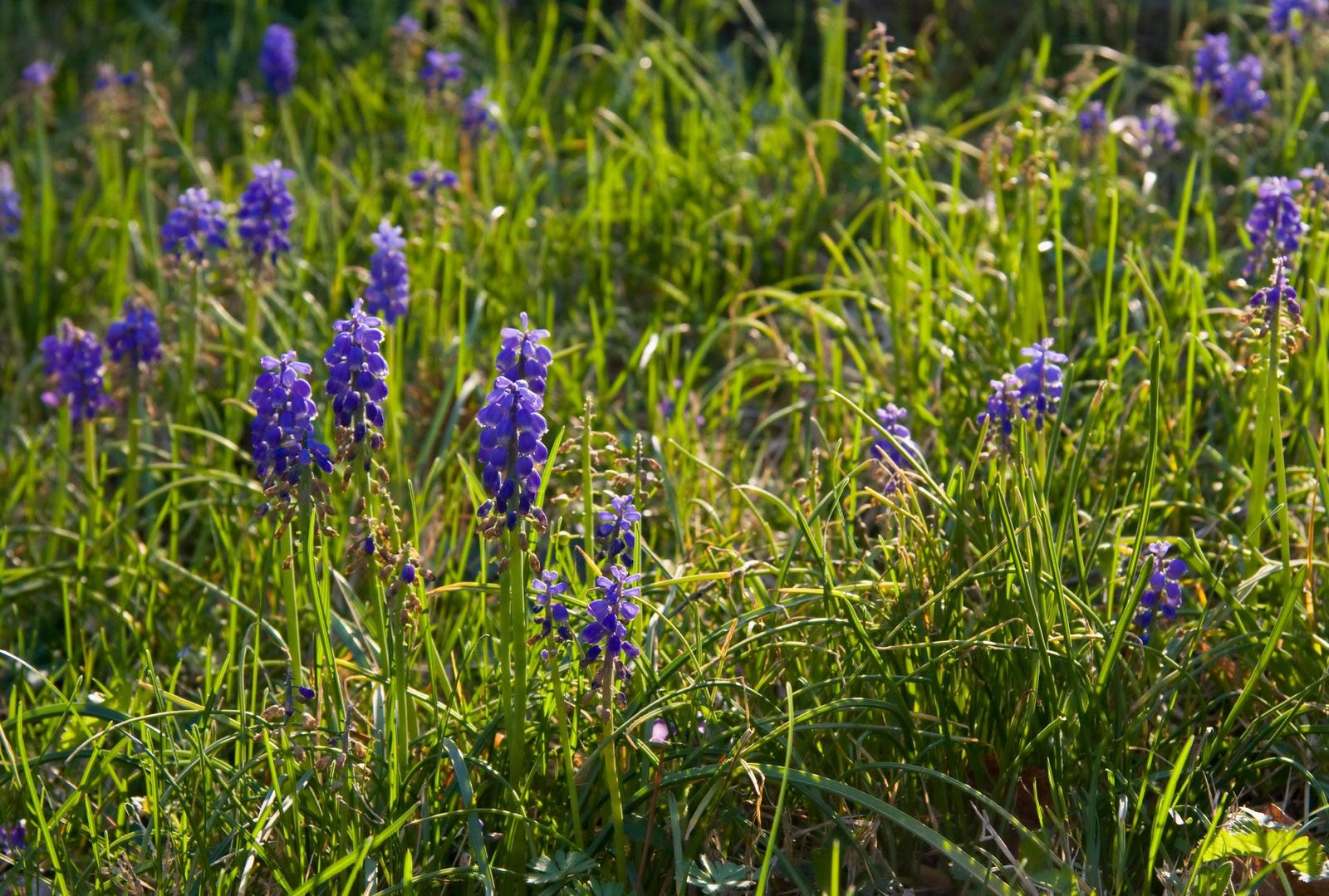Grape hyacinths (Muscari spp.) are petite spring-blooming bulbs that produce charming flowers in shades of purple, blue, and white They naturalize easily and spread readily from seeds and bulblets While grape hyacinths look lovely in contained garden beds, their rapid spreading can quickly turn them into weeds. If your grape hyacinths have gotten out of control, here are some tips for getting rid of them.
Why Grape Hyacinths Become a Nuisance
Grape hyacinth bulbs multiply quickly from bulblets that form around the parent bulb Mature bulbs also produce abundant amounts of seeds that readily self-sow As grape hyacinth colonies expand, they can crowd out other plants and take over garden beds. The waxy coating on their bulbs also makes chemical control difficult. Getting rid of grape hyacinths takes patience and persistence. But with the right techniques, you can eradicate them.
Manual Removal of Grape Hyacinths
Manually digging up grape hyacinths is labor-intensive but avoids the use of chemicals Here are step-by-step instructions
-
Identify areas overrun by grape hyacinths. Wait until the plants are in full bloom so they are easy to spot.
-
Once the flowers fade, pull up the spent flower stems and remove the seed heads so they cannot self-sow.
-
Using a garden fork or shovel, start digging up the soil to a depth of 5-6 inches. This will allow you to remove the bulbs and bulbets.
-
Extract every bulb and bulblet you find. Place them in a bag for disposal rather than composting.
-
Refill the area with fresh soil and reseed or replant with desired plants.
-
Check the area regularly for any grape hyacinth regrowth. Dig up and remove any bulbs you missed.
Manual removal works best on small infestations. It may take several years to fully eradicate grape hyacinths using this method.
Using Herbicides on Grape Hyacinths
For large grape hyacinth infestations, herbicides provide a quicker control option. Systemic herbicides that kill the bulb are most effective, including:
- Glyphosate (Roundup)
- Diquat dibromide
- Glufosinate ammonium
Follow these guidelines when using herbicides:
-
Spray when plants are actively growing in early spring. This allows the herbicide to translocate down into the bulb.
-
Avoid drift onto desired plants. Use a shield and spray on a calm day.
-
Glyphosate will require several applications. Diquat and glufosinate provide faster control.
-
Combining manual digging with chemical spraying delivers the best results.
While herbicides provide quicker grape hyacinth control, the manual method is more eco-friendly and avoids chemical use.
Suffocating Grape Hyacinths
Smothering grape hyacinths with mulch, cardboard, or landscape fabric can be effective. Wait until the foliage dies back in early summer, then:
-
Mow or weed whack any remaining foliage close to the ground.
-
Cover the entire area with 4-6 inches of mulch, sheets of cardboard, or layered landscape fabric.
-
Leave the barriers in place for at least one full year. This helps deplete the grape hyacinth bulbs of energy.
-
Check for any growth pushing through the barriers. Remove manually.
-
Reapply fresh barriers as needed for another season.
This technique gradually starves grape hyacinth bulbs but avoids chemicals. Combine with manual digging for best results.
Best Practices for Prevention
To prevent grape hyacinths from spreading out of control:
-
Deadhead spent flowers before they form seed pods.
-
Remove bulblets that form around the base of mature bulbs.
-
Divide bulbs every 3 years to control crowding and maintain vigor.
-
Plant in containers or areas bounded by sidewalks, driveways or lawn. Avoid open garden beds.
-
Interplant with faster-growing annuals or perennials that can outcompete grape hyacinths.
With persistence and a multi-pronged approach, you can get rid of invasive grape hyacinths. The key is addressing both the leaves and the bulbs to stop their spread.

Q&A – How do I get rid of garlic and grape hyacinth in my lawn?
FAQ
How to get rid of hyacinths naturally?
Are grape hyacinths invasive?
How do you stop muscari from spreading?
Can you mow over grape hyacinth?
How do you kill grape hyacinths?
You can also use a propane weed torch and burn off the greens. This method will require several years for complete success but eventually the plants will die. Removing grape hyacinths manually is a bit of a chore but works better than herbicide use.
What is the method to wash grapes to get rid of pesticides?
Scientific evidence shows that bicarbonate of soda might be effective for removing pesticide residues. The general recommendation is to soak for 15 minutes in 2 cups of water with 1 teaspoon of bicarb.
How do you get rid of Grape Hyacinth Bulbs?
To get rid of grape hyacinth bulbs, you’ll need to dig them out. Wear knee pads and gloves for protection, stay hydrated, and take breaks. Repeat this process for several years, as it may take time before the outbreaks become manageable.
How long does it take to get rid of grape hyacinth?
Complete elimination may take years. The first step to get rid of grape hyacinth is to remove seed scapes after the flower petals have fallen. Although it takes at least four years for the little seedlings to form flowers, the seeds will eventually restart the hyacinth take over.
Is having grape hyacinths a problem?
Grape hyacinths can become a problem due to their resilience and quick-spreading nature, which can make them hard to manage even with commercial weed eliminators. You should be prepared for a ‘battle of attrition’ if you have them.
How does grape hyacinth spread?
Grape hyacinth produces numerous seeds once the blooms are spent and bulbets are formed off the parent bulbs for future flowers. This allows grape hyacinth plants to spread rapidly and sometimes out of control. Grape hyacinth weeds infest untilled fields and garden beds alike and may rely upon sequential grape hyacinth control for complete removal.
